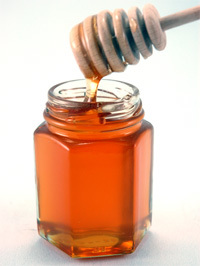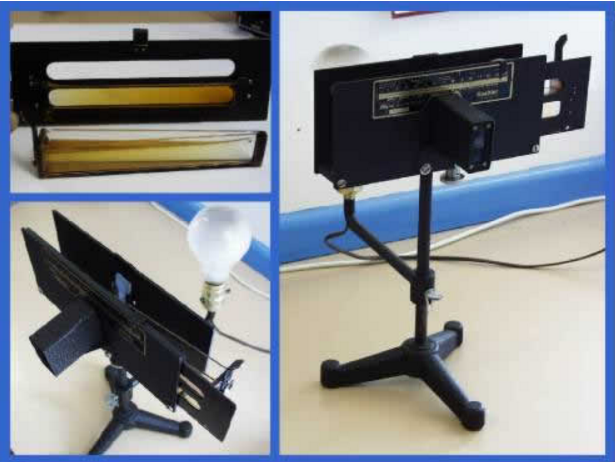Honey Grading easy 123 / 12, ABC 1-7, or It’s Government not Science!
Click here for the Master Bee Syndicate Post with links to all other posts
After I made my last blog post @Alamar asked about honey grading. (c’mon man you are srsly going to ask me to explain some government nonsense… ok fine I will give it a shot.) It is a good question but I promise that the answer will not be as good as the question. It's actually a bit complicated.
Leave it to bureaucrats to to make something as simple as A. B. C. complicated as all hell. I have to say it's not entirely their fault i mean I think they did there best but Honey is made by insects of varying genetic makeup forging nectar from an endless array of flowers so by nature honey is fairly inconsistant. So to have a consistent way to classify something that is inconsistent you know it's going to be a sticky situation. (You like that you see what I did there you know because honey is sticky Ok I know I'm reaching but i'm going to try and make this entertaining before we get into the USDA stuff)
Full disclaimer I may get a lot of this wrong, but I'm going to do my best to explain it as best as I can. If I go way out into left field someone feel free to correct me in the comments.
Honey is not required to be graded it is done completely voluntarily and as far as i know no one enforces adherence to USDA guidelines for honey grading. So why are we doing this? I HAVE NO IDEA. (Actually it's done solely for marketing.)
The current standards for grading honey were published by the USDA on May 23 1985 in a document called “United States Standards for Grades of Extracted Honey” and approved by William T. Manley Deputy Administrator Marketing Programs (See I told you it was just some marketing BS)
see the USDA document here http://www.honey.com/images/downloads/exhoney.pdf
Let’s get into it.
First the 123 part:
The USDA separates honey first into three types, two styles, three quality grades(Not including substandard), and 7 colors grades.
***** Types and Styles *****
---Types ---
Type 1
Liquid honey. Liquid honey is honey that is free from visible crystals. 
Type 2
Crystallized honey. Crystallized honey is honey that is solidly granulated or crystallized, irrespective of whether candied, fondant, creamed or spread types of crystallized honey.

Type 3
Partially crystallized honey. Partially crystallized honey is honey that is a mixture of liquid honey and crystallized honey. 
---Styles---
Style 1
Filtered.
Filtered honey is honey of any type defined in these standards that has been filtered to the extent that all or most of the fine particles, pollen grains, air bubbles, or other materials normally found in suspension, have been removed.

Style 2
Strained.
Strained honey is honey of any type defined in these standards that has been strained to the extent that most of the particles, including comb, propolis, or other defects normally found in honey, have been removed. Grains of pollen, small air bubbles, and very fine particles would not normally be removed.

So for example
Example 1
A jar of honey bought in your local supermarket is very likely to be “ Liquid Filtered honey”
Example 2
something from a beekeeper at a farmers market taken from an extractor poured through a screen and into a jar and sold to you would be “Liquid Strained Honey”
Example 2.5
if the beekeeper decided to make the above into a hard candy it would be “Crystallized strained Honey.
Are you with me so far? good because here's where it starts to … well just stick around you will see. it's ridiculous you can tell its government not science. The precision measurements and scales I'm about to expose you to is going to blow you mind.
***** Quality Grading *****
The process for determining the quality of extracted honey is based on a points system. a honey sample is rated in four categories
Percent Soluble Solids -- percent soluble solids, and percent moisture (this can be determined by basicly any method that “works” according to the USDA guidelines but seems to be the only part of the grading process that has a set of actual guidelines to determine what score should be given to a sample. {see Table III - Refractive Indices, Corresponding Percent Soluble Solids, and Percent Moisture in Extracted Honey _1/ in the USDA PDF linked above.} )
-- Absence of Defects
means the degree of freedom from particles of comb, propolis, or other defects which may be in suspension or deposited as sediment in the honey. Classifications for the factor of quality, absence of defects, are:
(1) Practically free - the honey contains practically no defects that affect the appearance or edibility of the product.
(2) Reasonably free - the honey may contain defects which do not materially affect the appearance or edibility of the product.
(3) Fairly free - the honey may contain defects which do not seriously affect the appearance or edibility of the product.
As far as I can tell you can just eyeball this measurement. I can find no specifications for an actual measurement
-- Flavor & Aroma
again this analysis is totally subjective
but they do tell you what to look for.
(1) Good Flavor and aroma for the predominant floral source- the product has a good, normal flavor and aroma for the predominant floral source or, when blended, a good flavor for the blend of floral sources and the honey is free from caramelized flavor or objectionable flavor caused by fermentation, smoke, chemicals, or other causes with the exception of the predominant floral source.
(2) Reasonably good flavor and aroma for the predominant floral source - the product has a reasonably good, normal flavor and aroma for the predominant floral source or, when blended, a reasonably good flavor for the blend of floral sources and the honey is practically free from caramelized flavor and is free from objectionable flavor caused by fermentation, smoke, chemicals, or other causes with the exception of the predominant floral source.
(3) Fairly good flavor and aroma for the predominant floral source - the product has a fairly good, normal flavor and aroma for the predominant floral source or, when blended, a fairly good flavor for the blend of floral sources and the honey is reasonably free from caramelized flavor and is free from objectionable flavor caused by fermentation, smoke, chemicals, or other causes with the exception of the predominant floral source.
-- Clarity
(Clarity is only used for the grading of filtered honey not strained.)
Clarity means, with respect to filtered style only, the apparent transparency or clearness of honey to the eye and to the degree of freedom from air bubbles, pollen grains, or other fine particles of any material suspended in the product. Classifications for the factor of quality, clarity, are:
(1) Clear - the honey may contain air bubbles which do not materially affect the appearance of the product and may contain a trace of pollen grains or other finely divided particles of suspended material which do not affect the appearance of the product.
(2) Reasonably Clear - the honey may contain air bubbles, pollen grains, or other finely divided particles of suspended material which do not materially affect the appearance of the product.
(3) Fairly Clear - the honey may contain air bubbles, pollen grains, or other finely divided particles of suspended material which do not seriously affect the appearance of the product.
A sample of honey gets graded in the above categories by well anyone. The USDA does not grade it so this is usually done by the person or company selling the honey. (It is probably clear to you by now why you have never seen grade B or C honey.) Based on the “score” of each of the categories {See that USDA PDF again TABLE IV - FILTERED STYLE / Table V - Strained Style } gets an allotment of points the total score determines the Overall quality grade of the honey.
---- Grades
Grade A is the quality of extracted honey that meets the applicable requirements of Table IV or V, and has a minimum total score of 90 points.
Grade B is the quality of extracted honey that meets the applicable requirements of Table IV or V, and has a minimum total score of 80 points.
Grade C is the quality of extracted honey that meets the applicable requirements of Table IV or V, and has a minimum total score of 70 points.
so it gets even more complicated from there but as I have pointed out the way the scoring is done makes this all BS any way so I'm not going to get into it.
***** Color Grading *****
This part of honey grading at least has a tool that is used to classify honey this tool is called the pfund color grader

Now it's worth noting that the USDA States that the Pfund scale is official but the tool used to place the honey color on that scale is “not the officially approved device for determining color designation when applying these United States grade standards for the color of honey“. What is the official tool … I don't know they don't ever seem to say, but it’s probably would want to use a Honey Color Photometer. However, only the pfund color grader is mentioned in the grading documentation.

Pfunds are measured in Millimeters that's because when you look through the viewfinder of color grader you see a gradient scale that you compare to the honey So you place your haney it in a mm range

based on where it falls on the scale you can call your honey one of the 7 official honey colors.




